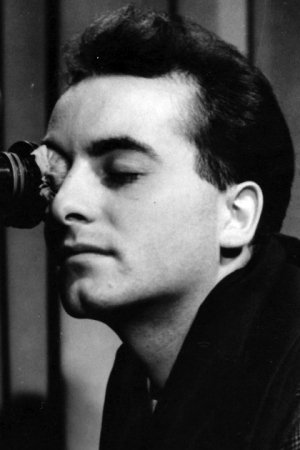Jacques Natteau (1920-2007)
Birthplace:
Constantinople, Ottoman Empire [now Istanbul, Turkey]
Born:
November 15, 1920
Died:
April 17, 2007
Jacques Natteau (15 November 1920 – 17 April 2007) was a French director of photography. Natteau was born on 15 November 1920 in Istanbul, Turkey. His father, Edouard Chiuminatto, was a captain in the French Army who had fought in World War I and was wounded multiple times in the battles of the Somme, Chemin des Dames, and Verdun. After World War I, his father was dispatched to Turkey as part of the Allied occupation force where he met Rosine Foscolo, a direct descendant of the 19th century Italian poet, Ugo Foscolo. Edouard and Rosine married and gave birth to their only child, Jacques Etienne Chiuminatto. Under the terms of the 1919 Versailles Treaty, the defeated Ottoman Empire, as an ally of Imperial Germany, surrendered and was occupied by Anglo-French forces. The French Army seized Turkey's railways and Edouard was put in charge of administering the railway network. When Natteau was three years old, Kemal Atatürk came to power and ended the Allied occupation of Turkey. The family settled in Paris and the young Jacques Natteau won admittance to Paris's prestigious Lycée Henri IV where he graduated in 1938 earning his Baccalauréat. He later remembered that, on 4 February 1934, he literally ran for his life as violent riots broke out in Paris prior to the collapse of the French government. Growing up in Paris's artistic 6ème arrondissement in the 1930s, Natteau came to know some of its most successful residents including Jean Cocteau, Jacques Prévert, Jean-Paul Sartre, Simone de Beauvoir, Albert Camus, Pablo Picasso. In 1939 on the eve of World War II, Edouard, haunted by the horrendous slaughter he had seen as a foot soldier in the bloody Battle of Verdun, persuaded his son to join the French Air Force. In the summer of 1939, Jacques Natteau enlisted in the air force with his Lycée Henri IV friends, many of whom were scions of the French nobility: Jean-Marie de Premontville, Armagnac, Raoul de Vibray, and Prince Louis Murat (direct descendant of Joachim Murat, Napoleon's famous cavalry general). By the time, Natteau and his friends had earned their wings as fighter pilots, the Franco-German Phoney War (September 1939 – May 1940) and the Battle of France and Hitler's victorious blitzkrieg against the West (May–June 1940) had all but ended. But as fighter pilots they had engaged German and Italian enemy fighters on multiple occasions. On one occasion Natteau, flying a Morane-Saulnier M.S.406 fighter, engaged three Italian fighter pilots who were strafing French civilians on the road. He shot down two and the third escaped. Upon France's collapse in 1940, Jacques Natteau linked up with the Royal Air Force and fought in the Battle of Britain. His exploits earned him the Distinguished Flying Cross and the French Legion of Honor. In 1938, the legendary French film director, Jean Renoir, gave him his first job as assistant camera man for the film La Bête humaine. But his career was interrupted by the onset of World War II. After the war, he resumed his career in the late 1940s and went on to become one of Europe's most famous cinematographers in the 1950s and 1960s. Natteau was the favoured cinematographer for Claude Autant-Lara. ... Source: Article "Jacques Natteau" from Wikipedia in English, licensed under CC-BY-SA.





